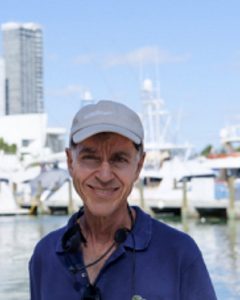|
Getting your Trinity Audio player ready...
|

In an earlier column, we discussed Greater Miami’s rich, variegated history, beginning with the Native Americans who lived in today’s deep south Dade County, and likely elsewhere, at least 10,000 years ago. Subsequent peoples of differing backgrounds appeared with the entry of Spaniards nearly ninety-five hundred years later, as a Jesuit missionary and an assemblage of Spanish soldiers joined a Tequesta Indian community on the north bank of the Miami River near the mouth of the stream in 1567. The mission was part of a wide-ranging series of missions crafted by Pedro Menendez Aviles, the Spanish conqueror of Florida, for the conversion of native populations to Roman Catholicism, as well as for alliance building. A devout Catholic, Menendez organized these mission outposts that stretched from today’s South Carolina along both coasts of Florida and along today’s Panhandle in the northwest sector of the state.
Brother Francisco Villareal, S.J. (the initials refer to the Society of Jesus, commonly known as the Jesuits, a religious order of the Catholic Church) arrived on the north bank of the Miami River, establishing a mission at Tequesta, the Spanish name for both the Native Floridians there as well as that site. Soon after, Menendez showed up and officially inaugurated the Mission of Tequesta. Menendez left behind thirty soldiers and some workers, who erected palisades around the settlement, erected a cross, fashioned from a pine tree, in its center, and built twenty-eight rudimentary huts.
When Menendez returned to the mission, he was impressed that the natives “both great and small” took part in devotions twice daily “in front of a large cross.” The Tequestas also staged a dramatic play for him. When he left the mission for the final time, the Spanish admiral took three Tequestas with him, including Chief Tequesta, to Seville, where they were baptized into the Catholic faith in the great cathedral.
Brother Villareal reported in a revealing letter that “I have been teaching doctrine to the Indians up to 15 years of age. Those who attend, most of them, know the four prayers and nearly all the commandments.” Villareal also taught doctrine in the house of the chief with many adults present. Additionally, the Jesuit held fiestas with litanies to the cross, put on two comedies, having to do with the war between men and the world, the flesh and the devil (the clash between good and evil).
There was a downside to the mission, as captured by Brother Villareal in the same missive, which can be found in the Church of the Gesu in Rome. Villareal complained about the pestiferous mosquitoes, and the resultant sleepless nights. Only by sleeping amid clouds of smoke, he explained, could he endure. The Jesuit complained that there was hostility between the soldiers and the natives. The Tequestas were non-agricultural peoples who fished, hunted, and gathered fruits. At times, food was in short supply, causing periodic hunger, which prevented Tequestas from attending spiritual gatherings.
Within one year of the mission’s establishment, the Spanish closed it owing to an acceleration in the fighting between the Tequestas and Spanish soldiers.
In the following year, however, a second mission opened on the north bank of the Miami River, probably for the fact that Don Diego, the Christianized name of Chief Tequesta’s brother, was now a zealous convert, who had been bedazzled by his Baptismal ceremony. Father Antonio Sedano, S.J. came to Tequesta after braving stormy seas to reach his destination. The Jesuit received a hearty greeting from Don Diego, who assured him that his people wished to become Christians. We know little of the settlement, though, other than it was manned by twenty to thirty Spanish soldiers and was surrounded by a cross made of pine trees, placed there by Native Miamians. The mission was abandoned in 1570 for reasons unknown.
One hundred-seventy-three years later, in 1743, the Jesuits returned to the Miami River with their most ambitious mission yet in response to a petition for their return by Native Americans in the Florida Keys. Called the Pueblo de Santa Maria de Loreto, the Miami mission consisted of two Spanish Jesuits, Fathers Joseph Maria Monaco and Joseph Javier Alana who, with considerable help, built a stockade near water’s edge, an area today that stood near the footprint of the parking garage for the Wachovia Tower in downtown Miami. A population survey indicated that only 180 Native Miamians were in that area and they were unhappy with the presence of the Jesuits in their midst. After Father Alana filed a report on the mission to the governor of Cuba, that official asked permission of the king to close the mission on the shores of Biscayne Bay, arguing that “the whole effort was fruitless and a waste of money because of the Indians’ rootlessness and unadulterated fickleness.” The request was granted, and, in 1744, the mission era in Miami was over. By then, the last remnants of Tequestas had disappeared from the area. Decades would pass before a substantial homesteader population would take up its chores in the Miami.
Paul S. George, Ph.D., serves as Resident Historian, HistoryMiami Museum. He conducts history tours throughout the County and even beyond for HistoryMiami. Dr. George also leads Little Havana tours as part of Viernes Culturales, a monthly celebration, every third Friday, of the culture and history of that quarter.





